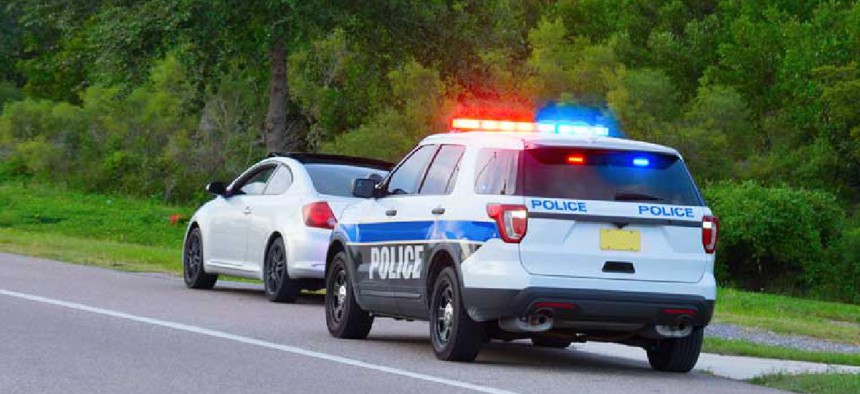Can data from traffic stops end disparities in policing?


Connecting state and local government leaders
The Pennsylvania State Police will collect data that will be analyzed for patterns of racial and ethnic disparities.
The Pennsylvania State Police (PSP) launched a contact data collection program to capture demographic and other information related to traffic stops that will then be analyzed for patterns of racial and ethnic disparities.
Started Jan. 1, the program involves troopers collecting information during self-initiated traffic stops that then goes to researchers led by criminal justice professor Robin Engel at the University of Cincinnati (UC). Engel will study the data and make recommendations on changes to PSP policy or training based on her team’s results.
“Troopers take an oath to enforce the law ‘without any consideration of class, color, creed or condition’ and collecting this data will help us ensure that we are upholding that oath,” Capt. Sean Georgia, director of the Radio and Information Services Division of PSP’s Bureau of Communications and Information Services, wrote in email responses to GCN. “We believe this program will not only inform future decisions on training and department policy, but also build trust and legitimacy within the communities we serve by demonstrating our department’s commitment to transparency and continuous improvement.”
The contact data reports (CDRs) have more than 30 fields, including driver and passenger age, ethnicity, gender, race and reason for the stop. Several fields are automatically populated, such as the trooper’s employee number and the county name and municipality code, based on location selection. Others can be entered manually or from drop-down menus. Troopers also note how long the stop took, whether they searched the vehicle and the result of any such search.
CDRs are integrated into PSP’s existing records management system (RMS) and computer-aided dispatch (CAD) system. The Traffic and Criminal Software (TraCS) application -- which troopers use to create enforcement forms, such as traffic citations, non-traffic citations and police warning notices from the patrol vehicle -- securely communicates with RMS and other PSP databases. Data from those databases can be auto populated into enforcement forms and the CDR, Georgia said. Additionally, “TraCS, RMS and CAD have allowed PSP to create a ruleset that requires a CDR whenever troopers conduct a self-initiated traffic stop,” he said.
PSP ran a similar CDR program from 2002 through 2011, and UC researchers analyzed that, too. To complete reports at that time, troopers had to complete a separate paper report by “filling in bubbles on a ‘scantron’ sheet,” Georgia said. A supervisor reviewed the forms and mailed them to UC, where researchers entered the data into a database.
Technology advances will benefit the new system, according to the program's announcement. For instance, the auto population feature for most required CDR fields is new. It saves troopers time and makes their reporting more accurate, Georgia said.
“If a trooper were not to complete the CDR at the time of the traffic stop, the CDR still auto populates based upon linkage rules between the various databases a trooper accesses and PSP’s internal RMS,” he said. “Additionally, if a trooper fails to complete the CDR within three days, they receive an auto-generated email reminder. After five days, the trooper’s supervisor receives an auto-generated email reminder.”
What’s more, aggregated data from the reports goes to UC on a biweekly basis using a secure file-transfer process, he added. There, Engel, who is also director of the International Association of Chiefs of Police/University of Cincinnati Center for Police Research and Policy, and her team will compare the data against benchmarks they’ve developed using multivariate data analyses of post-stop outcomes, such as arrests, citations, citizen complaints, searches, seizures, uses of force and warnings. They will conduct these studies at the area, troop and station levels and make recommendations on changes to PSP policy or training based on their results.
The program runs through the end of the year. The UC team will provide regular reports in that time and a final statistical analysis in April 2022. PSP will likely continue the collection and analysis of CDRs in the future, officials said.
NEXT STORY: Electric Cars’ Looming Recycling Problem




